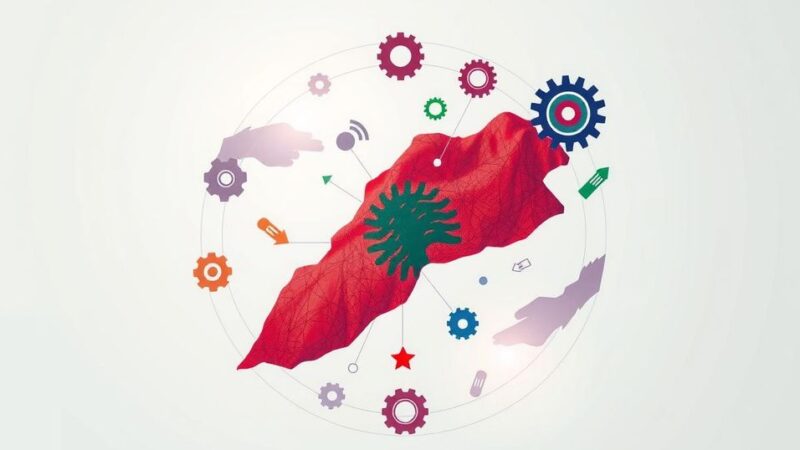The M23 rebel group is advancing towards Goma, eastern Congo, displacing over 178,000 people in two weeks. The rebels have taken key towns, raising concerns about their capture of Goma again. This conflict involves multiple armed groups fighting for mineral resources amid a significant humanitarian crisis that has displaced over 7 million people.
Recent advancements by the M23 rebel group in eastern Congo have led to the displacement of over 178,000 individuals in just two weeks, according to the United Nations. As these fighters approach Goma, the largest city in the region, concerns grow regarding their potential capture of this strategic location, which they held briefly in 2012. Notably, Congolese authorities reported the rebels taking control of Minova, a critical supply hub for Goma, which is essential for both security and humanitarian efforts.
This ongoing conflict is part of a broader struggle among nearly 100 armed groups in eastern Congo, all vying for power over mineral-rich territories. This enduring instability has resulted in over 7 million displaced persons in a humanitarian crisis that ranks among the gravest globally. Accusations against Rwanda, including allegations of backing the M23 rebels, have been denied by the Rwandan government despite claims from Congo, the United States, and UN experts.
The recent surge in displacement stems from escalated fighting near Minova in South Kivu province. Thousands of individuals arrived in cramped wooden boats at Goma, some arriving with their few belongings bundled and carried. The Nzulo camp, serving as a refuge on the outskirts of Goma, has been inundated with displaced people seeking safety. However, the uncertainty of safety has prompted some to leave even that camp.
For example, David Kasereka, fleeing with a child, expressed his bewilderment regarding their destination, stating, “We do not know where we are going, because everywhere, the bombs are following us.” Another displaced resident, Nadège Bauma, faced the prospect of relocating once more as threats from advancing rebels intensified, adding, “We just learned that the M23 has arrived in Ngwiro… and we decided to leave the area because bullets and bombs are falling.”
The provincial governor confirmed the M23’s control of Minova, as well as several other mining towns, further complicating the dire situation in the region. The Congolese military has acknowledged the rebels’ significant gains in Minova and Bweremana, signaling a troubling escalation in the ongoing conflict.
The M23 rebel group has a history of conflict in eastern Congo, characterized by their ethnic Tutsi composition and a contentious relationship with the Congolese army. This group emerged from previous discontent and has played a significant role in the ongoing violence that has predominantly affected the eastern provinces, particularly North and South Kivu. Goma, as a critical urban center close to Rwanda, serves as a focal point for both humanitarian efforts and military confrontations, involving international scrutiny and accusations against neighboring states for interference in Congolese affairs. The humanitarian crisis resulting from the conflict has drawn attention due to the high number of displaced persons and the precarious living conditions faced by refugees.
The ongoing advance of the M23 rebels towards Goma has resulted in significant humanitarian consequences, including the displacement of over 178,000 people. As the rebels capture key supply routes and locations, fears mount regarding the stability of Goma and the potential for further escalations in conflict. The situation remains fluid, as displaced individuals seek refuge amidst ongoing violence, highlighting the urgent need for international attention and intervention in resolving this long-standing crisis.
Original Source: apnews.com






